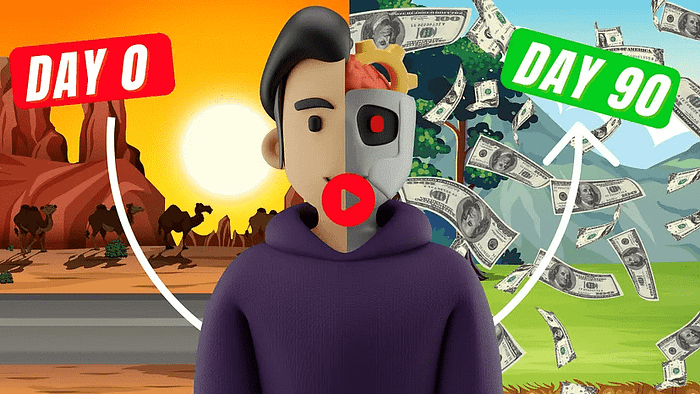How I Scaled My No-Code SaaS to $2,067 MRR in 30 Days: A Complete Blueprint
Transforming a cold calling software concept into a thriving SaaS business generating $2,067 in Monthly Recurring Revenue (MRR) within just 30 days might sound ambitious, but I accomplished exactly that with my power dialer solution, ZapEx. This journey exemplifies how strategic market analysis, customer-centric feature development, and effective partnership building can create a successful SaaS venture with minimal initial investment.
We strongly recommend that you check out our guide on how to take advantage of AI in today’s passive income economy.
Table of Contents
The Genesis of a Power Dialer Solution
The conceptualization of ZapEx emerged from a deep market analysis of existing power dialer solutions. In the competitive landscape of cold calling software, established players like Aircall, Kixie, and Dialpad dominated the market, each generating substantial revenue. This market validation confirmed the viability of introducing another solution, particularly one addressing specific pain points that larger competitors had overlooked.
Market Research and Feature Prioritization
Through meticulous competitor analysis on G2 Reviews, I uncovered critical insights about user needs and market gaps. The research revealed that many established providers had shifted their focus to enterprise clients, creating an opportunity to serve smaller businesses with more targeted solutions. By analyzing customer reviews, particularly the criticism sections, I identified three essential features that would form the core of ZapEx’s minimum viable product (MVP).
Core Features That Matter
The research highlighted parallel dialing as the most crucial feature, enabling users to call up to five prospects simultaneously and connect with whoever answers first. This functionality dramatically increases daily call volume and efficiency. Integration capabilities, particularly with HubSpot and Salesforce, emerged as the second most requested feature. The third critical component was local presence calling, which displays a local area code to prospects, significantly improving answer rates.
Strategic Pricing and Market Entry
A recurring theme in competitor reviews was pricing frustration, with established solutions charging between $150 to $400 per seat monthly. For a ten-person sales team, this translated to $1,500 to $4,000 monthly for a single tool. Recognizing this pain point and leveraging the trend of AI reducing software costs, I positioned ZapEx at a competitive $50 per seat monthly, focusing on essential features without unnecessary complexities.
Market Penetration Strategy
The go-to-market strategy leveraged outbound sales techniques, beginning with purchasing 10,000 emails and 2,000 phone numbers from ListKit. This data powered targeted cold email campaigns through SmartLead, our email platform of choice. The approach yielded immediate positive responses, leading to product demonstrations and conversions to paying customers.
Converting Interest to Revenue
An innovative approach to follow-up involved immediate cold calling to interested prospects rather than prolonged email exchanges. This strategy increased demo booking rates by approximately 50%, demonstrating the effectiveness of prompt, direct engagement with potential customers.
The Partnership Advantage
One of the most effective growth strategies implemented was strategic partnerships. By identifying companies serving the same ideal customer profile but offering complementary solutions, we created mutually beneficial lead-sharing arrangements. The partnership with SmartLead exemplifies this approach, as both platforms target outbound sales teams but serve different functions.
Integration and Co-Marketing
The partnership with SmartLead extended beyond lead sharing to include technical integration. When SmartLead detected positive email responses, it automatically created a call list in ZapEx and notified sales representatives, streamlining the follow-up process. A joint training session promoting this integration generated over 1,000 qualified leads and numerous customer conversions.
Scaling Through Strategic Marketing
With monthly revenue reaching $1,500, reinvestment in growth became possible. Following proven strategies from previous ventures, I engaged an SEO agency to implement a comprehensive search optimization strategy. This three-pronged approach encompassed on-site SEO, technical optimization, and strategic content creation through blog posts.
Investment and Return Analysis
The entire venture required less than $11,000 in initial investment, covering essential tools like SmartLead, ListKit, LLC formation, and miscellaneous software subscriptions. This minimal capital requirement, combined with strategic partnerships and efficient market entry, demonstrates the feasibility of building a successful SaaS business without substantial upfront investment.
Market Evolution and Future Directions
The landscape of outbound sales has evolved significantly since 2022, with cold email and LinkedIn outreach effectiveness declining by approximately 50%. This market shift, combined with personal interest alignment, has influenced strategic decisions about ZapEx’s future development and resource allocation.
Conclusion
The success of ZapEx demonstrates that building a profitable SaaS business is achievable with strategic market analysis, focused feature development, and effective partnership building. The blueprint outlined here – from market validation through strategic partnerships to scalable marketing – provides a replicable framework for entrepreneurs looking to enter the SaaS market with minimal initial investment.

We strongly recommend that you check out our guide on how to take advantage of AI in today’s passive income economy.




